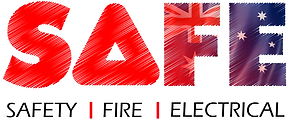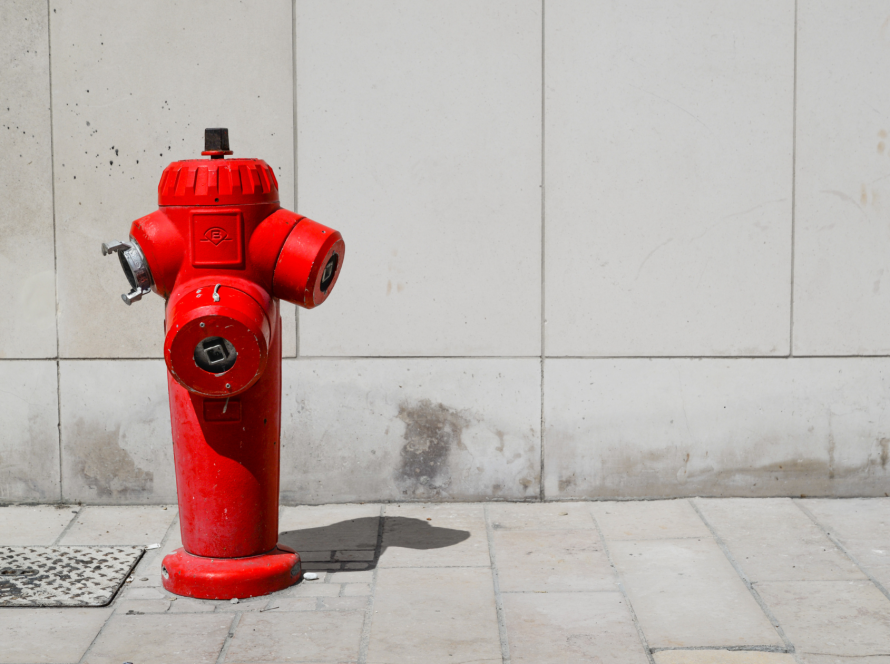Fire hydrants are an integral component of any community’s fire protection infrastructure. They serve as reliable and critical water resources for firefighters during emergencies, providing immediate access to water for suppressing fires. Queensland has very strict legislation and compliance standards that regulate the installation, maintenance, and usage of fire hydrants to ensure optimal safety measures are in place. Let’s learn more about these fire hydrant requirements in QLD.
Legislation and Compliance
Stringent regulations govern the installation and maintenance of fire hydrants to uphold safety standards. According to the Queensland Fire and Emergency Services (QFES), hydrants located above or below ground should be provided and maintained to the minimum required performance standard as per AS 2419.1 2005. The requirements for installing fire hydrants are also set out in the Queensland Development Code, Part MP 6.4 – Firefighting equipment.
The Building Fire Safety Regulation 2008, Queensland Building and Construction Commission (QBCC) and Building Code of Australia (BCA/NCC) also outline specific requirements for the placement, accessibility, and functionality of fire hydrants. Property owners and managers are responsible for ensuring compliance with these regulations to mitigate fire risks effectively.
Types of Fire Hydrants
There are various types of fire hydrants, each designed to meet specific needs and environments.
- Underground Hydrants. These are commonly found in urban areas and are installed below ground level. They are equipped with a valve that is accessed by firefighters using a special tool. Underground hydrants are connected to the municipal water supply system and provide a readily available water source for firefighting purposes.
- Pillar Hydrants. Also known as above-ground or standpipe hydrants, these are more visible and accessible compared to underground hydrants. Pillar hydrants consist of a vertical pipe with a valve and a nozzle above ground level. They are often installed along roadsides or in public areas, providing a convenient water source for firefighting operations.
When it comes to operational design, we have the traditional fire hydrants, dry barrel hydrants, and the wet barrel hydrants. Each type has distinct features and functions tailored to different scenarios, ensuring versatility in fire suppression efforts.
Dry barrel hydrants are typically used in colder climates where the water within the hydrant could freeze during winter months. They have a valve at the base of the hydrant below the frost line, which is dry when the hydrant is not in use.
Wet barrel hydrants, on the other hand, are commonly used in warmer climates where freezing isn’t a concern. In this design, water is present in the barrel of the hydrant at all times. They simply connect their hoses to the hydrant and draw water directly from the barrel.
Installation Requirements
Proper installation of fire hydrants is critical to their effectiveness during emergencies. AS 2419.1 specifies requirements for the design, installation and commissioning, and testing of fire hydrant installations that are used for the protection of buildings, structures, storage yards, marinas and associated moored vessels, wharves, and plants.
As per the Building Code of Australia, buildings with a total floor area of 500 square meters or more, including basements, plant rooms, and mezzanine floors, are required to install fire hydrants. Furthermore, access to fire hydrants is restricted solely to trained personnel from the local fire brigade. Adherence to installation guidelines ensures optimal performance and longevity of the hydrant system.
Maintenance, Inspection, and Testing Protocols
Regular maintenance and inspections are essential to keep fire hydrants in optimal working condition. Form 72 says that fire hydrant periodic testing and maintenance is mandatory. Water-based fire safety installations, such as fire hydrants, are required to be tested and maintained according to the Queensland Development Code – Mandatory Part (MP) 6.1. All hydrant systems also need to comply with AS1851 for maintenance inspections and the relevant design approved during construction.
Routine checks for leaks, corrosion, and functionality help identify potential issues before they escalate. Fire Hydrants should be inspected on a 6 monthly basis. However, the requirements between the 6 monthly inspection and the annual or 5 yearly inspections vary significantly.
Pressure testing and flow testing assess the water supply and delivery capabilities of hydrants, confirming their reliability during firefighting operations. Testing protocols should be conducted by qualified professionals in accordance with industry standards.
Fire Hydrant Components
Understanding the components of a fire hydrant is essential for proper maintenance and troubleshooting.
- Barrel: The main body of the hydrant, often cylindrical in shape, which contains the internal mechanisms and serves as the conduit for water flow.
- Nozzle: Located at the top of the hydrant, the nozzle is where hoses are connected to access the water supply. It may feature various sizes and fittings to accommodate different hose types.
- Valve: The valve controls the flow of water within the hydrant. It can be operated manually or, in some cases, remotely. There may be multiple valves within the hydrant, including a main valve and auxiliary valves for maintenance purposes.
- Bonnet: The bonnet covers the valve mechanism, protecting it from environmental factors and damage. It is typically removable for maintenance and repair purposes.
- Operating Nut: This is the part of the hydrant that is turned to open or close the valve. It is usually located at the top of the hydrant and may be equipped with a pentagon-shaped nut for specialized tool access.
- Stem: The stem connects the operating nut to the valve mechanism, transmitting the rotational motion to open or close the valve.
- Hydrant Head: The uppermost part of the hydrant, which may include signage indicating the location of the hydrant, as well as features for easy identification, such as color-coded caps or reflective bands.
- Flange: The flange is the connection point between the hydrant and the underground water supply piping. It provides a secure attachment while allowing for easy installation and removal.
- Hydrant Base: The lower portion of the hydrant, typically buried underground, which anchors the hydrant in place and provides stability. It may also include drainage features to prevent water accumulation.
Regular inspection of these components helps identify any signs of wear or damage that may affect performance.
Common Issues and Troubleshooting
Despite their importance, fire hydrants can experience issues such as:
- Leaks: Leakage can occur at various points in the hydrant, including the valve stem, nozzle, or hydrant body. This can result from worn seals, corroded components, or damaged fittings.
- Obstructions: Hydrants may become obstructed by debris, dirt, or vegetation, hindering access to the water supply.
- Corrosion: Over time, the metal components of fire hydrants can corrode, particularly in areas with high humidity or exposure to corrosive materials. Corrosion weakens the structural integrity of the hydrant and can lead to leaks or operational failures.
- Mechanical Failures: Components such as valves, stems, or operating mechanisms may malfunction due to wear and tear, inadequate maintenance, or manufacturing defects. These failures can prevent the hydrant from operating properly when needed.
- Freezing: In colder climates, water within the hydrant or supply piping can freeze during winter months, causing blockages and rendering the hydrant unusable. This issue is more common with wet barrel hydrants and can be mitigated through proper insulation and drainage measures.
- Inoperable Valves: The valves within the hydrant can become stuck or difficult to operate over time, making it challenging for firefighters to access the water supply quickly during emergencies.
Prompt identification and resolution of these issues are crucial to ensure uninterrupted access to water during emergencies. Regular maintenance and timely repairs help mitigate potential risks and extend the lifespan of fire hydrant systems.
Wrapping Up
Fire hydrants play a crucial role in safeguarding communities against the devastating impact of fires. In Queensland, Australia, adherence to legislation and compliance standards ensures the effectiveness and reliability of fire hydrant systems. By prioritizing proper installation, maintenance, and testing procedures, stakeholders can enhance fire safety measures and mitigate risks effectively.
FAQs
- Are there specific regulations for fire hydrant placement in Queensland?
- Yes, the Building Fire Safety Regulation 2008 outlines requirements for the location and accessibility of fire hydrants on properties in Queensland.
- How often should fire hydrants be inspected and maintained?
- Fire hydrants should undergo 6-monthly, yearly and 5-yearly routine inspections and maintenance.
- What are some common issues that may affect fire hydrant performance?
- Common issues include leaks, corrosion, and malfunctioning valves, which can compromise the functionality of fire hydrants if not addressed promptly.
- Is training provided for accessing and utilizing fire hydrants during emergencies?
- Yes, emergency responders receive training on proper procedures for accessing and utilizing fire hydrants as part of their firefighting training programs.
- What role do residents and building occupiers play in ensuring fire hydrant readiness and accessibility?
- Residents and building occupants can contribute to fire safety efforts by reporting any issues or obstructions affecting fire hydrants to local authorities promptly.

